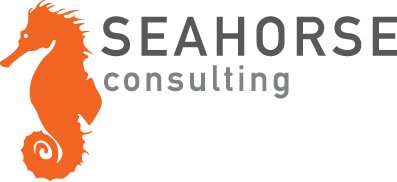Diagnostic Variance Analysis
1. Introduction
Last week, we covered the basics of framing—the first component of Seahorse’s decision-support framework:
Frame → Decide → Act → Learn.
The goals of Framing are to:
Ensure all stakeholders are addressing the same question (and ideally the right one)
Provide the right amount of information to support a decision.
Present data in a way that is meaningful to each stakeholder.
This week, I want to share a practical approach to framing called Diagnostic Variance Analysis. DVA allows us to take a simple variance, break it down into its key drivers, and identify opportunities for improvement.
Here’s a quick overview.
2. Basic Variance Analysis
Variance analysis is frequently used to examine how expenditure compares to budget.
Following the “profit-impact” convention, when expenditure is below budget, the variance is shown as a positive (i.e. favorable).
When expenditure exceeds budget, the variance is typically shown in red as a negative (i.e. unfavorable).
But it’s easy to imagine how this simple heuristic can break down.
3. Multidimensionality
Imagine a human services company with a negative variance (spend above budget), except that:
Volume was well ahead of plan,
The increased demand was for more complex services,
Productivity increased, and
Wage rates for frontline staff went up.
Is the overall good or bad?
4. Diagnostic Variance Analysis
Diagnostic variance analysis lets us examine the effect of each component. By isolating the impact of each driver in turn, we gain far more insight—as analysts and as storytellers.
This Google Sheet shows a completed Diagnostic Variance Analysis.
As you’ll see from the chart in the first tab, July’s costs were higher than June’s. The biggest contributor to this increase was volume (which will also show up in revenue and gross margin), followed by wage rates (which will depress gross margin) and a more complex, costlier service mix. Offsetting these factors was a significant productivity gain.
The table in the third tab maps out the calculations. Feel free to email me if you would like a live copy of this sheet.
In practice, it was this productivity gain which prompted further investigation. Working with operations leaders, we determined that the change in service mix supported much better utilization and throughput. These insights allowed the client to sharpen pricing, and—through revised marketing—consciously push the mix toward these higher-margin, more complex services. By right-sizing staffing, we avoided the overtime premiums that had driven the wage variance and ultimately lifted revenue by 4.3% and margin by 2.4% on a sustained basis.
5. Bottom line
(Re)framing a change in costs using diagnostic variance analysis produced richer insight, surfaced new options, and delivered sustained improvements in key financial results.
If you would like to develop richer insights into the drivers of your Key Performance Indicators (KPIs), don’t hesitate the reach out. Seahorse offers Fractional FP&A and Business Analytics services to a range of companies, and supports leadership in making data-driven decisions that accelerate growth and profitability.
